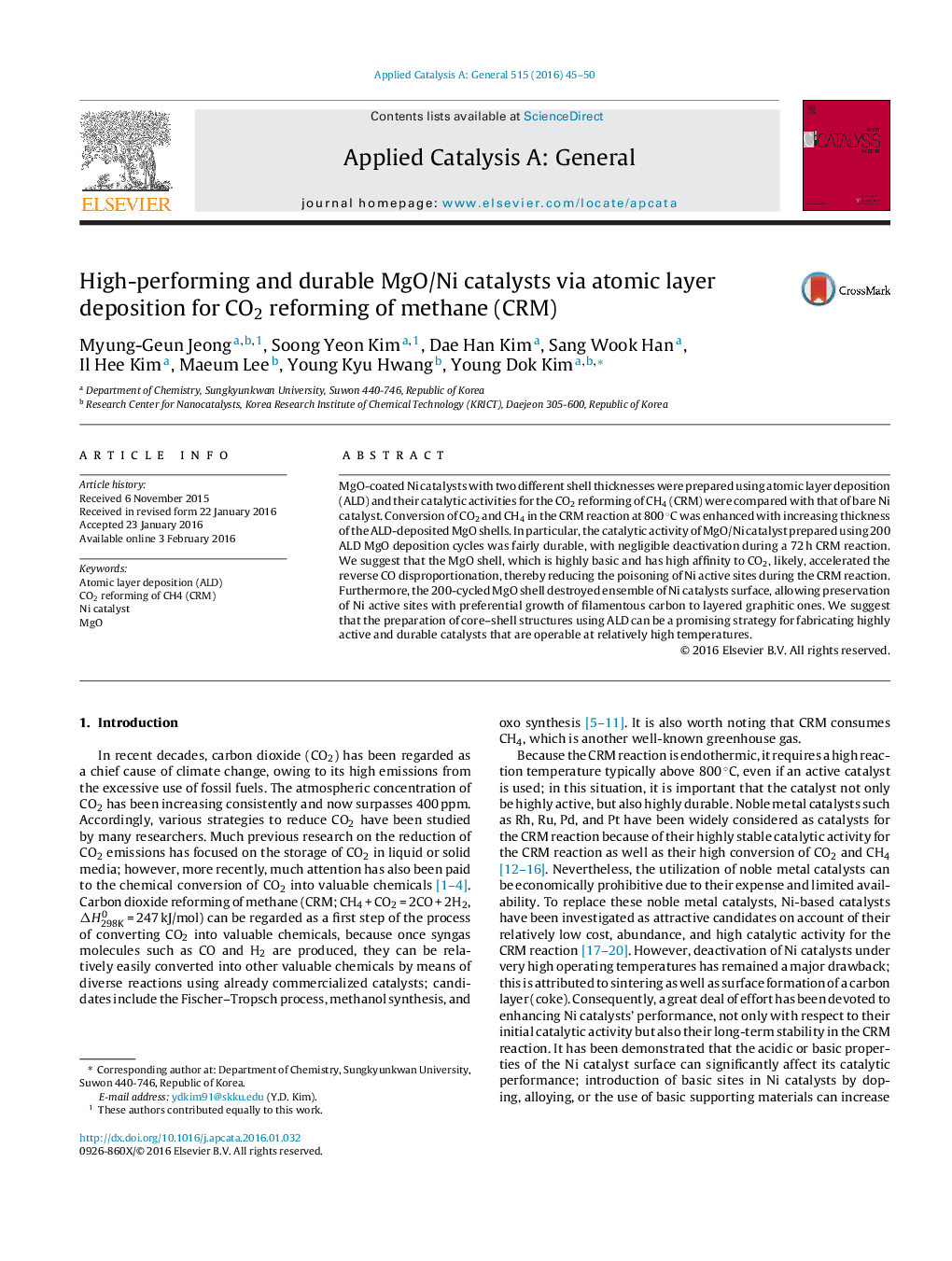| Article ID | Journal | Published Year | Pages | File Type |
|---|---|---|---|---|
| 38861 | Applied Catalysis A: General | 2016 | 6 Pages |
•MgO shell-coated Ni catalysts with two different shell thicknesses were fabricated using atomic layer deposition (ALD).•MgO on Ni catalysts enhanced catalytic performance in terms of activity as well as stability for CRM reaction, compared to the uncoated catalysts.•The superior catalytic performance was attributed to increasing strength and amount of basic sites and sinter-resistance by MgO shell.•Ni ensemble for graphitic carbon deposition was destroyed by MgO shell, resulting in improvement of catalytic durability for the CRM reaction.
MgO-coated Ni catalysts with two different shell thicknesses were prepared using atomic layer deposition (ALD) and their catalytic activities for the CO2 reforming of CH4 (CRM) were compared with that of bare Ni catalyst. Conversion of CO2 and CH4 in the CRM reaction at 800 °C was enhanced with increasing thickness of the ALD-deposited MgO shells. In particular, the catalytic activity of MgO/Ni catalyst prepared using 200 ALD MgO deposition cycles was fairly durable, with negligible deactivation during a 72 h CRM reaction. We suggest that the MgO shell, which is highly basic and has high affinity to CO2, likely, accelerated the reverse CO disproportionation, thereby reducing the poisoning of Ni active sites during the CRM reaction. Furthermore, the 200-cycled MgO shell destroyed ensemble of Ni catalysts surface, allowing preservation of Ni active sites with preferential growth of filamentous carbon to layered graphitic ones. We suggest that the preparation of core–shell structures using ALD can be a promising strategy for fabricating highly active and durable catalysts that are operable at relatively high temperatures.
Graphical abstractFigure optionsDownload full-size imageDownload high-quality image (120 K)Download as PowerPoint slide
